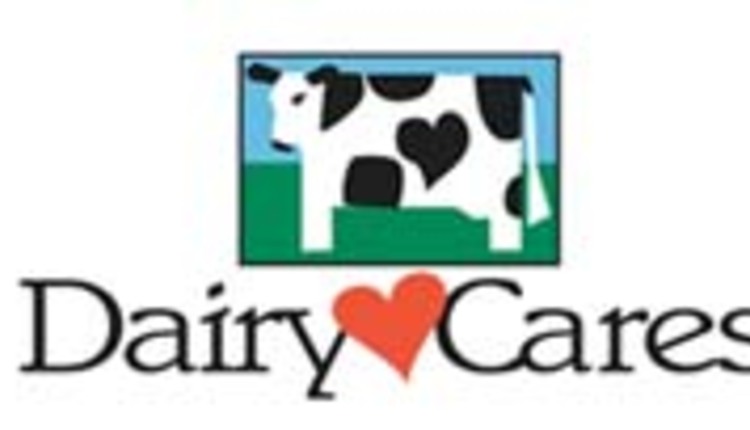
In recent years, there have been countless debates on whether or not agricultural land rents and purchase prices are headed for a market bubble. So far, agriculture has completely avoided a market correction. You may recall that bubble sent the housing and commercial real estate values spiraling downward a few years back. Can agriculture continue to sidestep a similar fate?
That was the focus of a meeting hosted by the Federal Reserve Bank of Chicago late last year as a full auditorium assembled to hear loan officers, economists, crop specialists and banking regulators debate whether ag land is becoming overinflated. This Federal Reserve Bank has great focus on the issue since it covers Illinois, Indiana and Iowa; three of the top five corn and soybean states.
While there were bearish and bullish outlooks, all specialists agreed that you must have a firm handle on both cost of production and balance sheets before acquiring your next parcel of land - be it a purchase or rental agreement. Failing to do so could be potentially catastrophic to a farming operation if the land market should turn against them.
A red hot fire
"Land values are currently like a well-stoked, blazing Friday night camp fire," explained Brent Gloy, director for Purdue's Center for Commercial Agriculture. "We dumped a lot of wood on the camp fire and land values are blazing hot.
"Demand for ethanol was the first pile of wood tossed onto the small fire. More wood was dumped through additional export demand from Asia. As returns continued to grow, row crops improved which provided for more cash, and that combined with low interest rates added more wood and the fire got much hotter and brighter," said the Indiana-based farm economist. "As if we didn't have enough fuel, some more wood was tossed onto the blaze in the form of crop insurance and reduced supplies from this year's drought.
"That isn't the only thing taking place," said Gloy. "Soon bankers are going to field many more calls to extend credit to finance higher land values. If they do this in substantial amounts, it will be like pouring gasoline on the fire, and you will see values and rents rise. Whether lenders do this will go a long way in determining where land values go."
What does it all mean?
"Current values are dependent upon continuation of low interest rates and high returns over a crop's variable costs," said Gloy. "It is very difficult to predict what will take us out of this current row-crop cycle. But credit can magnify the outcome either way. Keep in mind, if interest rates go above 4 percent, you will need more income to justify current land price trends.
"Times in the row-crop business are very good," he continued, "it is very conceivable they could get better. It is also conceivable that they could be worse."
One thing's for sure, the glow on land prices has raised regulators' eyebrows as they have the recent housing bust and the early 1980's farm crisis still ingrained in their memory banks.
"In 1951, it took 14 years of cash rent to pay for land," stated Jeffery Jensen, assistant vice president of supervision and regulation for the Federal Reserve Bank of Chicago. "In 2007, 33 years of cash rent was required to pay for land," cautioned Jensen. "That number is still climbing.
"Our projections indicate break-even rent for a corn-on-corn rotation would be $333 cash rent in Iowa based on $5.40 corn and a 165 bushel yield next year," said Jensen quoting Iowa State Extension research.
That's if you are looking at rents. "If you are financing a land purchase, a 1 percent upward movement in interest rates will require a 50-cent per bushel improvement in corn prices to cover the additional costs," added Leslie Miller, vice president of the Iowa State Savings Bank. "That potential scenario is causing bankers to be very cautious on loans. With escalating land prices, most lenders will only count half of land's current value as collateral for a new loan," the Iowa community banker went on to explain, recalling the 1980's land crisis.
"When forward contracting crops, don't get overconfident by contracting too much potential production and think that crop insurance will cover the gap," cautioned Miller. "You are substituting production risk for market risk."
Rent or own?
"Current ownership trends vary by farming enterprise," said Todd Kuethe, an economist with USDA's Economic Research Service. "In 2011, crop farmers owned 50 percent of the land they tilled, cash rented another 36 percent and sharecropped 14 percent. Livestock operations have higher ownership levels at 63 percent with 36 percent being cash rented," noted Kuethe. "That number is even greater among Upper Midwest livestock farmers who own 67.6 percent of their land. Meanwhile, crop farmers in the region only own 40 percent of their crop ground," said Kuethe, citing statistics from a recent nationwide USDA study.
Another interesting demographic from that recent USDA study was that researchers found that 75 percent of landlords are rural residents living within the same state as the renter.
"Contrary to what's written in the popular urban press, not much ag land is held by people with metropolitan addresses," said Kuethe.
"When I started with the Farmers National Company in 1986, 92 percent of farms under our management were sharecropped compared to 8 percent cash rented," said Jim Farrell, president of the nation's largest farm management company. "That is reversed today as 44 percent are cash rented, 36 percent are sharecropped and 20 percent are a blend . . . based on the 4,700 managed by our organization.
"Cash Rent-Plus is the new trend that represents that blend," said Farrell. "It provides rent regardless of price or production plus provides additional rent if prices rise or crop production is above average."
As for a projection on this year's rents, "We expect cash rents to rise 5 to 10 percent for 2013," said Farrell. "From a farmer's perspective, the margins are getting thin. There are very high operating costs which means there is little margin for error and less money available to service operating debt," he said.
Still a good buy
"Since 1957, gold has had an 85 percent positive correlation to Illinois and Iowa farmland," explained Murray Wise, who remains bullish on long-term land values. "Sure there will be some volatility in land prices," said the founder of the Westchester Group, a farm and asset management company. "However, farmer's are conservative by nature and debt levels are low. In 1982, 62 percent of Iowa farms had no debt. In 2008, 75 percent of the state's farm had no debt. Overall, farms are rock solid.
"World grains stocks are also at their lowest levels since 1974," said Wise, who also serves as CEO of Murray Wise Associates, one of the nation's major land auction companies based in Champaign, Ill. "Land is a safe place to guard against inflation, as well. Then there's the additional world populations that must be fed."
How all this will specifically affect dairy farmers was not the focus of the meeting. However, as crops prices go, so do feed costs - the highest expense on the dairy farm ledger. Those buying or renting land must be able to cost justify the numbers so they are protected against any potential market downturn.
"No one will want to be the last person buying land if a market bubble is forming and land prices drop," said the Federal Reserve Bank's Jeffrey Jensen.
This Hoard's Dairyman editorial appears on page 7 of the January 10, 2013 issue.










